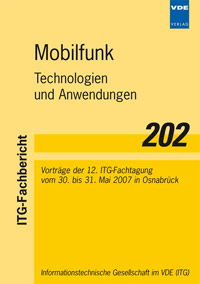Local Interference Coordination in Cellular OFDMA Networks
Conference: Mobilfunk - Technologien und Anwendungen - 12. ITG-Fachtagung
05/30/2007 - 05/31/2007 at Osnabrück, Germany
Proceedings: Mobilfunk - Technologien und Anwendungen
Pages: 6Language: englishTyp: PDF
Personal VDE Members are entitled to a 10% discount on this title
Authors:
Necker, Marc C. (Institute of Communication Networks and Computer Engineering, University of Stuttgart, Pfaffenwaldring 47, D-70569 Stuttgart, Germany)
Abstract:
The currently emerging 802.16e (WiMax) and 3GPP Long Term Evolution (LTE) cellular systems are based on Orthogonal Frequency Division Multiple Access (OFDMA). As OFDMA is basically a combination of FDM and TDM, it suffers from heavy inter-cell interference if neighboring basestations use the same frequency range. However, it is desirable to reuse the complete available frequency spectrum in every cell in order to maximize the resource utilization. One possible approach to solve this conflict is the application of beamforming antennas in combination with interference coordination mechanisms between basestations. Starting from a global interference coordination scheme with full system knowledge, we first investigate how spatially limited interference coordination affects the system performance. Subsequently, we study several realizable interference coordination schemes and show that a locally implementable scheme can almost match the performance of the global scheme with respect to the sector throughput.


